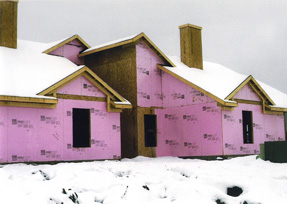Maintaining your house’s insulation:
After insulating your house, ensure that you maintain the insulation properly. Different maintenance factors should be considered. The most important factor is ensuring that there is no moisture in the insulating material. Moisture trapped within the walls’ insulation can lead to the growth of mold and mildew. Structural wood that is found between the insulation layers may rot due to moisture, or a dry wall can swell up. Damp insulation does not work as well as dry insulation; moreover, it can cause your heating and cooling bills to increase.
The effect of moisture on insulation:
A number of steps can be taken to prevent moisture affecting your insulation. Ensure that the roof does not have any leaks allowing rainwater to enter and water trickling down the roof is diverted away from the building. Ventilate your house to release moisture that builds up due to human activities in the house. High-moisture areas such as kitchen and bathrooms should be well ventilated. Another alternative to ventilation for preventing moisture buildup is using a vapor retarder. A vapor retarder is a treated substance such as papers, paints, plastic sheets, and metallic foils that reduces the passage of water vapor.
Guidelines to insulating your house:
When insulating your house, ensure that there is adequate space surrounding vents. Insulation that blocks vents will prevent the house from becoming cool or warm. There should also be 3 inches gap between recessed lighting fixtures or other heat-producing equipment and the insulating layer.
Sagging insulation layers may mean that they need to be replaced. In fact, you need to check this regularly. This is crucial for loose-fill insulation. Ideally, an attic should have at least 12 inches of insulation. Ensure that there are not too many thermal bridges. Thermal bridges are walls that have low insulation R-values. Heat escapes from the warm side of the insulation to the cold side. Aluminum or metal windows act as thermal bridges leading to heat loss during winter months.
Care should be taken to seal off any air leakages between living areas and other areas of the building. Air leaks account for up to 15% of the heating and cooling budgets in homes. Weather-stripping material should be used near windows and doors. This will ensure that warm air is not lost out of the building.










